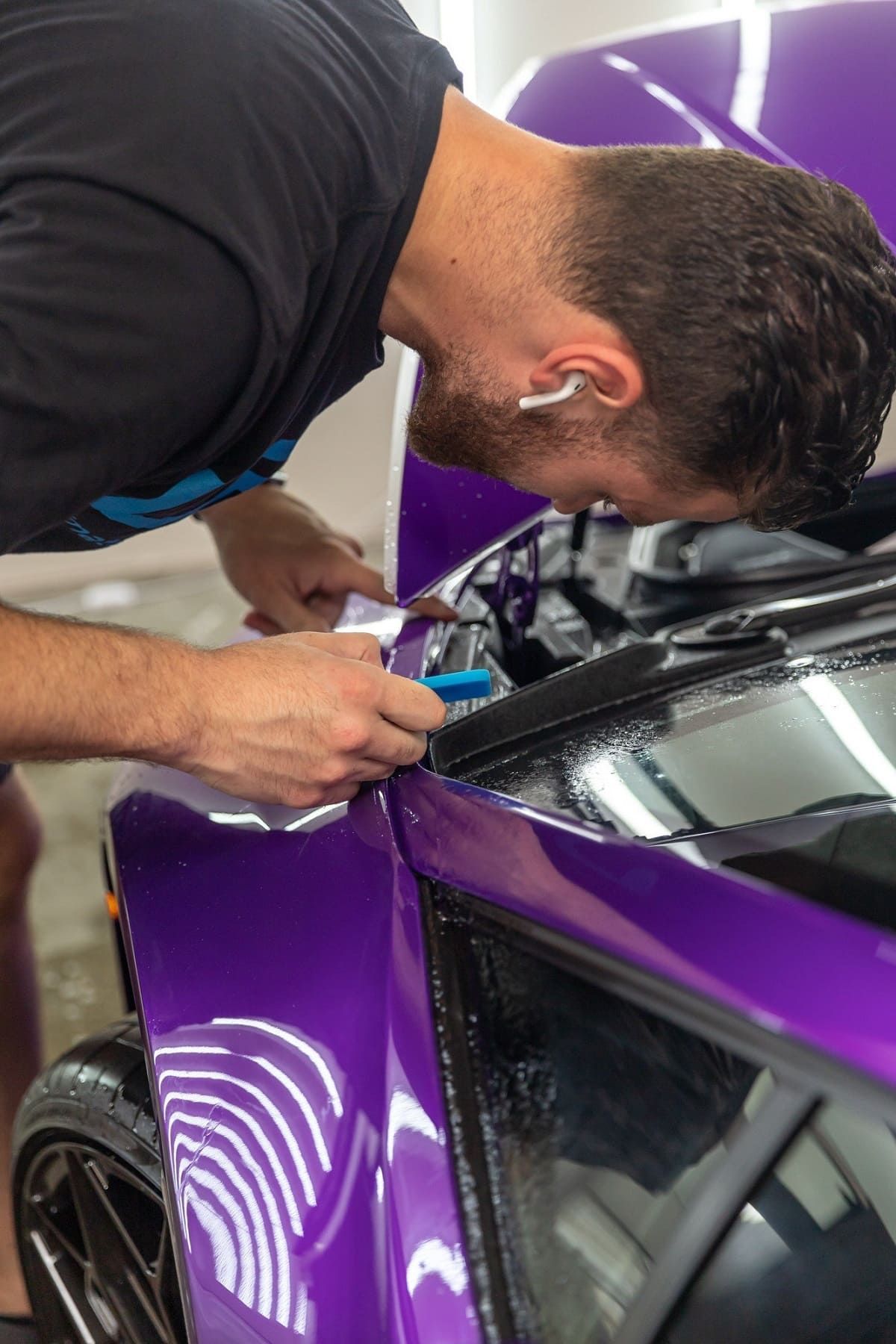Welcome to Ultimate Film Solutions in SACRAMENTO & NORTH HOLLYWOOD
Sacramento's #1 Paint Protection Film (PPF), Window Tinting, Vinyl Wraps, Auto Detailing, and Ceramic Coating Company
Protecting and enhancing the appearance of your vehicle has never been easier with Ultimate Film Solutions. Ultimate Film Solutions in Sacramento and North Hollywood-Los Angeles is your One-Stop Shop and #1 Installers for Paint Protection Film (PPF), Auto Window Tinting, Car Wraps, Ceramic Coating, Auto Detailing, and Paint Correction services. Ultimate Film Solutions is an is an Authorized Suntek Dealer offering the highest quality of Paint Protection Films (PPF) and Auto Window Tint. SunTek Paint Protection Films are scientifically formulated to create a strong, reliable layer of protection against damage caused by rocks, salt, insects, and other road debris. Its self-healing technology repairs scratches with heat from the sun or the engine. Unlike many of our competitors who train others to do their PPF installations, the owners of Ultimate Film Solutions personally install each Clear Bra Film job to ensure our clients are getting a superior installation. Our Paint Protection Films will protect your car's paint from chips, scratches, rocks, salt, and anything else the road throws your way, while keeping your car looking newer longer. The quality of our window films we install will greatly enhance the look, functionality, comfort of your vehicle, and energy efficiency of your car's glass, giving you control over your environment. We offer many film options depending on what you need, which include ceramic tint, metal dyed tint, carbon tint, and clear window film. In addition to PPF installations and Window Tinting, we also offer other auto restoration, auto protection, and customization services which include Car Vinyl Wraps, Auto Detailing, Ceramic Coating, and Paint Correction Services.
Our Craftmanship and Best-in-Class Installations are not only recognized in the local Sacramento areas by car enthusiasts, but also by local everyday drivers. Satisfied customers throughout Sacramento have depended on Ultimate Film Solutions for all their Paint Protection Film, Car Window Tinting, Ceramic Coating, Car Detailing, Vinyl Wraps, and Paint Correction needs. Ultimate Film Solutions is located at
8231 Alpine Ave Suite 12, Sacramento, CA 95826. Book your appointment now or call us
(916) 384-7565 for a free estimate now.
California Window Tinting Laws
California window tint law restricts windshield tint on top 4 inches.
Front side windows must have 70% light transmission or more. Back side windows and rear window may have any tint darkness.
Car window tinting laws in California were enacted in 1999.
We have provided all the necessary information about your car’s window tint, including how dark or reflective the tint is allowed in your state.
There are also additional car window tinting rules and regulations in California so make sure you read all about it below.
Other California window tint rules and regulations
California does have several other important laws, rules and regulations pertaining to window tinting. They include the following:
- Side Mirrors: Dual side mirrors are required if the rear window is tinted.
- Restricted Colors: California tint laws do not permit using red, amber or blue tint colors. Side windows must be colorless.
- Certificates: Manufacturers of film must certify the film they sell in the state and the driver is required to have the certificate in their possession.
- Stickers: State law does require a certificate or a sticker from the installing company and the manufacturer’s name and address.
- Medical Exceptions: California law allows medical exemptions for lower tint on all windows.
Keep in mind that California tinting laws and regulations may be interpreted differently in your county or place of residence.
We always recommend double-checking our information with your local DMV or law enforcement authorities.
What is the darkest legal tint in California?
In the sun-soaked state of California, where the weather is almost always inviting, many vehicle owners seek refuge from the intense sunlight by tinting their windows. However, navigating the regulations around window tint darkness can be a daunting task. If you're wondering about the darkest legal tint in California, you've come to the right place. Let's dive into the details to shed light on this shadowy subject.








